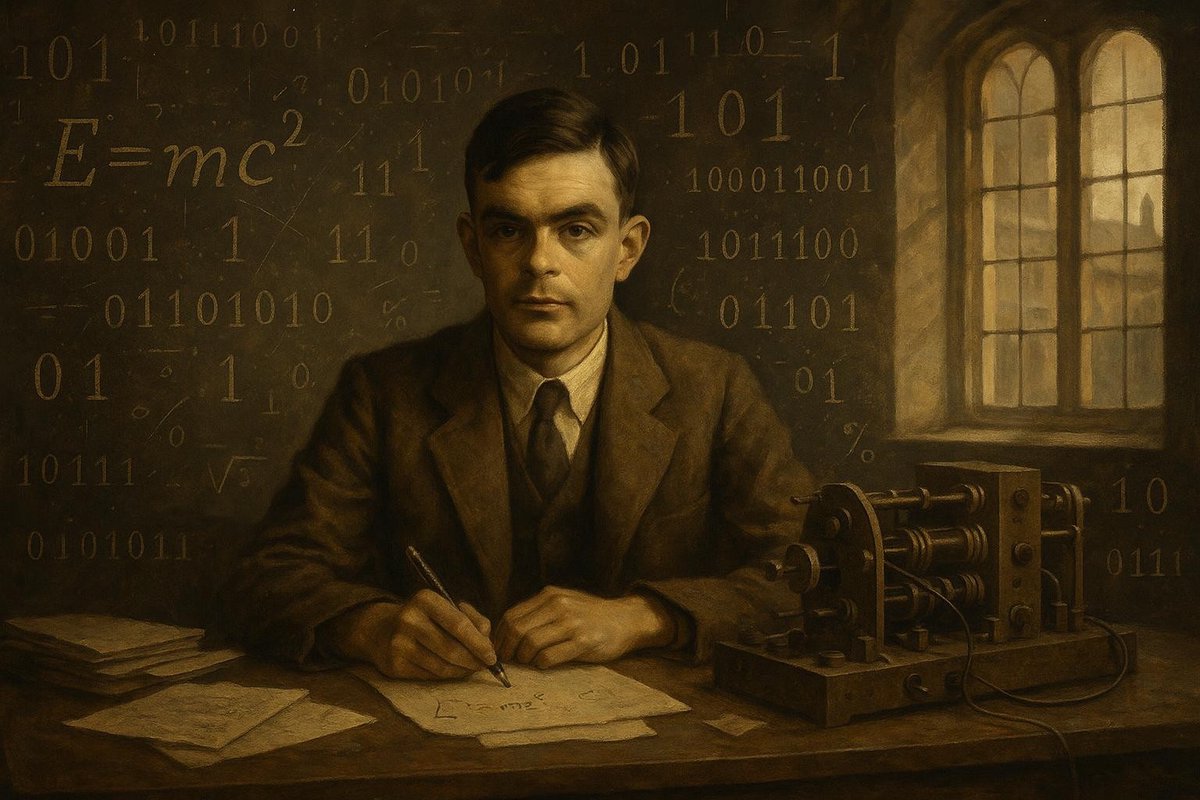
In the quaint halls of Cambridge, a young Alan Turing, with a gaze as sharp as his intellect, pondered questions that would redefine the future. His mind was a maze of logic and creativity, leading him to sketch blueprints for machines that could think. But how did this visionary path begin?
Early Influences: A Curious Mind Takes Shape
Alan Turing was born in 1912, in a world on the brink of technological revolution. His fascination with numbers and patterns was apparent even as a child. Many believe that his formative years were crucial in shaping his later theories.
- Turing’s interest in numbers was sparked by his early education.
- He was deeply inspired by the 1930s mathematical breakthroughs.
- His studies at King’s College, Cambridge, provided a fertile ground for his inquiries into logic and cryptography.
Interestingly, the social and cultural atmosphere of pre-war Britain, with its emphasis on innovation, encouraged thinkers like Turing to push boundaries. The intellectual community in Cambridge was alive with ideas that spurred on his inquisitive nature.
Mental Models: Constructing the Idea of a Thinking Machine
In 1936, Turing introduced the concept of the Turing machine, a theoretical construct that could simulate any algorithm’s logic. It was a triumph of abstraction and simplicity.
- The Turing machine became the foundation of theoretical computer science.
- Most importantly, it provided a model for understanding what it means for a machine to ‘compute’.
- His work laid the groundwork for the eventual development of digital computers.
Of course, Turing’s thought processes were not just theoretical. He imagined machines that could learn and adapt—early seeds of what we now call artificial intelligence. His mental models were not confined to the physical; they were vast landscapes of possibility, where logic danced with imagination.
Challenges & Resilience: Overcoming Obstacles in a Changing World
Turing’s journey was far from easy. The Second World War created an urgent demand for cryptographic expertise, and Turing answered the call with brilliance.
- He led a team at Bletchley Park that cracked the Enigma code, a pivotal point in the Allied war effort.
- Despite his contributions, Turing faced societal challenges due to his sexuality, which was criminalized at the time.
- His resilience in the face of personal and professional adversity was remarkable.
His capacity to endure challenges while maintaining his scientific pursuits demonstrates a resilience that many people find inspiring. In a world rapidly changing with technological advancements, Turing’s example is a testament to the power of determination.
Legacy: The Continuing Echo of Turing’s Theories
Alan Turing’s legacy is immense. His work laid the bedrock for modern computer science and artificial intelligence, fields that continue to evolve and impact society profoundly.
- Turing’s ideas sparked the development of computers and AI technologies.
- He is often called the father of computer science for his foundational contributions.
- The Turing Award, named in his honor, is the highest distinction in computer science.
As time goes on, his pioneering efforts remind us that great ideas often come from daring to question the status quo. Turing’s vision of machines that could think independently resonates today in our pursuit of advanced AI.
Fuel Someone Else’s Curiosity
Alan Turing’s journey through logic and imagination continues to inspire. Share his story, and let it kindle the flame of curiosity in others. Who knows? The next breakthrough in artificial intelligence might begin with a simple question, much like those Turing once asked.
Join the conversation, explore the wonders of Turing’s mind, and pass the torch of knowledge to others eager to learn.

Leave a Reply